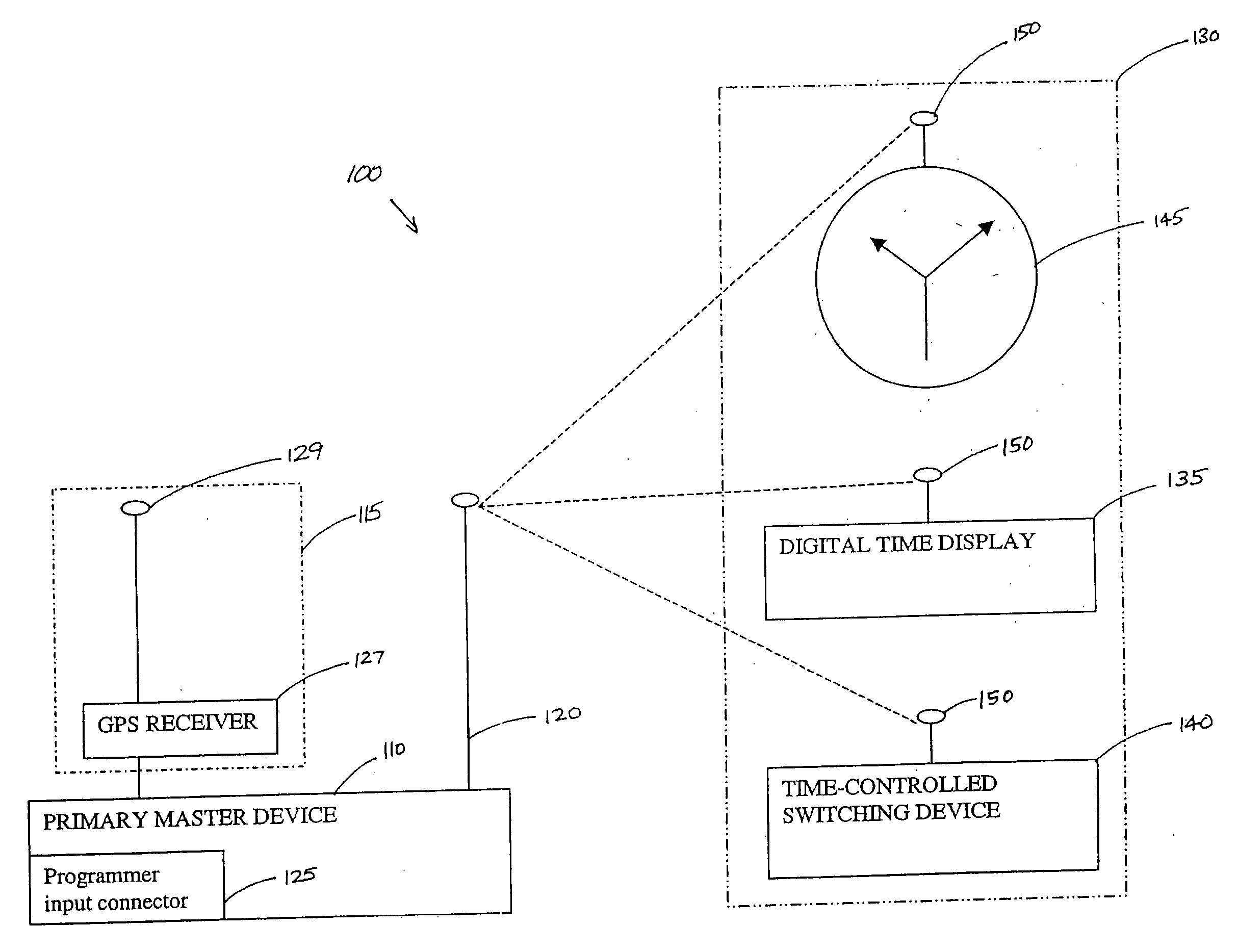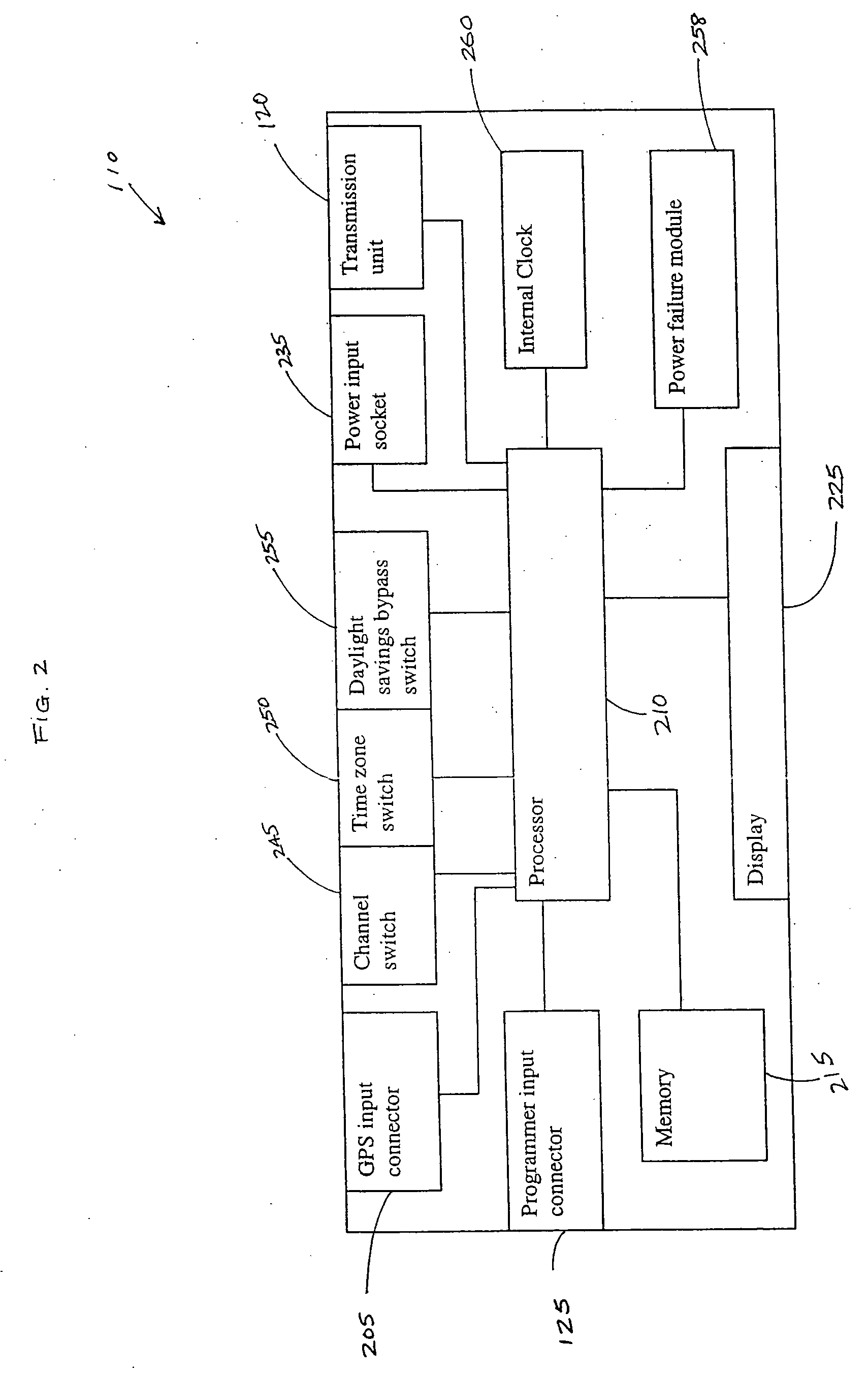Wireless synchronous time system
- Summary
- Abstract
- Description
- Claims
- Application Information
AI Technical Summary
Benefits of technology
Problems solved by technology
Method used
Image
Examples
Example
DETAILED DESCRIPTION OF THE DRAWINGS
[0019] Referring to FIG. 1, a wireless synchronous time system 100 in accordance with the present invention includes a primary “master” device 110, which receives a first time signal through a receiving unit 115 and broadcasts a second time signal to a plurality of “slave” secondary event devices 130. The receiving unit 115 includes a GPS receiver 127 having an antenna 129 which receives a global positioning system (“GPS”) signal, including a GPS time signal component. The receiving unit 115 sends the GPS time signal component to the primary master device 110 where it is processed, as further discussed below.
[0020] The primary master device 110 further includes a transmission unit 120, which wirelessly transmits a signal to the secondary or “slave” devices 130. The signal sent to the slave devices 130 includes the processed GPS time signal component and / or a programmed instruction which is input to the primary master device 110 through a program...
PUM
 Login to View More
Login to View More Abstract
Description
Claims
Application Information
 Login to View More
Login to View More - R&D
- Intellectual Property
- Life Sciences
- Materials
- Tech Scout
- Unparalleled Data Quality
- Higher Quality Content
- 60% Fewer Hallucinations
Browse by: Latest US Patents, China's latest patents, Technical Efficacy Thesaurus, Application Domain, Technology Topic, Popular Technical Reports.
© 2025 PatSnap. All rights reserved.Legal|Privacy policy|Modern Slavery Act Transparency Statement|Sitemap|About US| Contact US: help@patsnap.com



